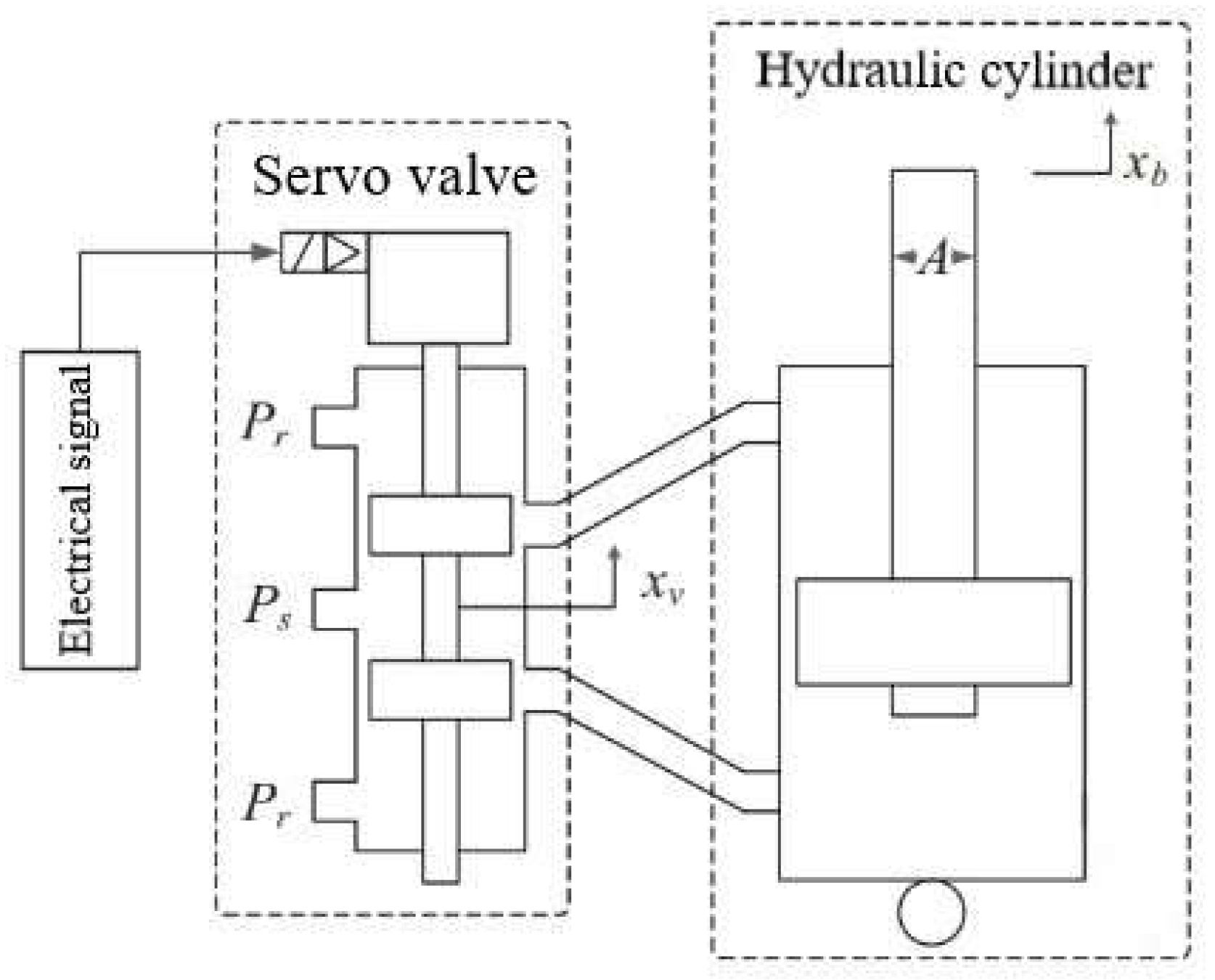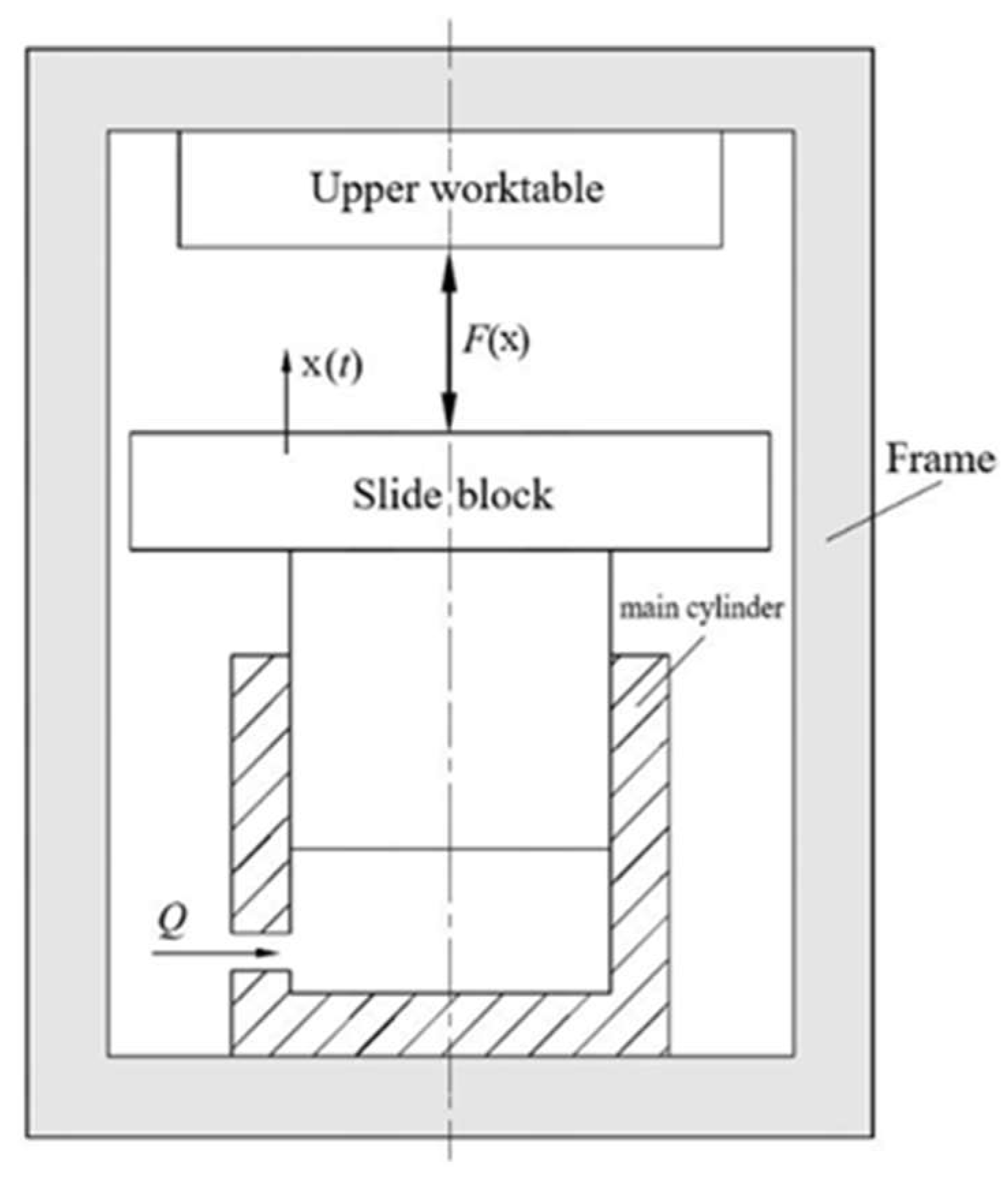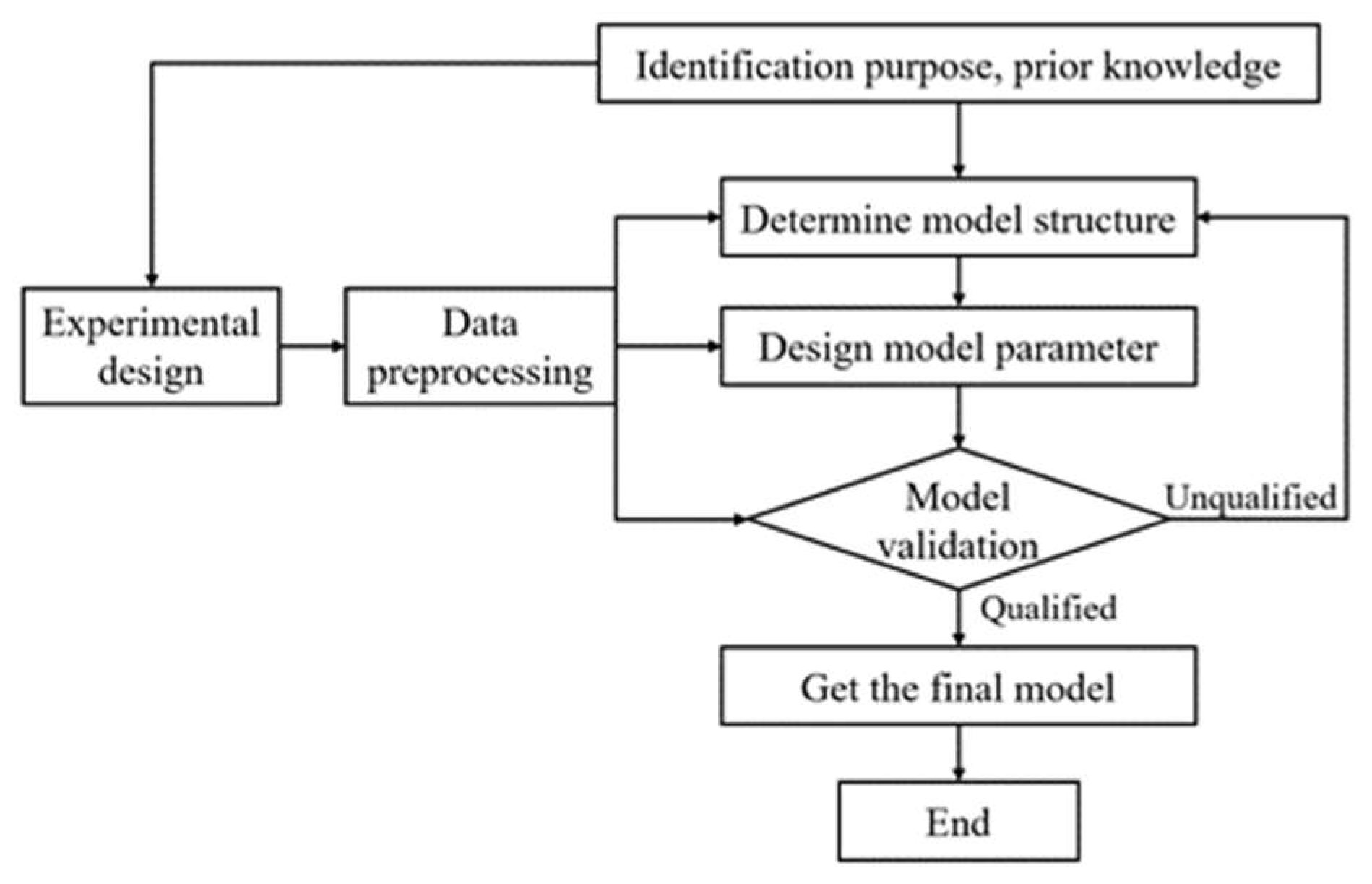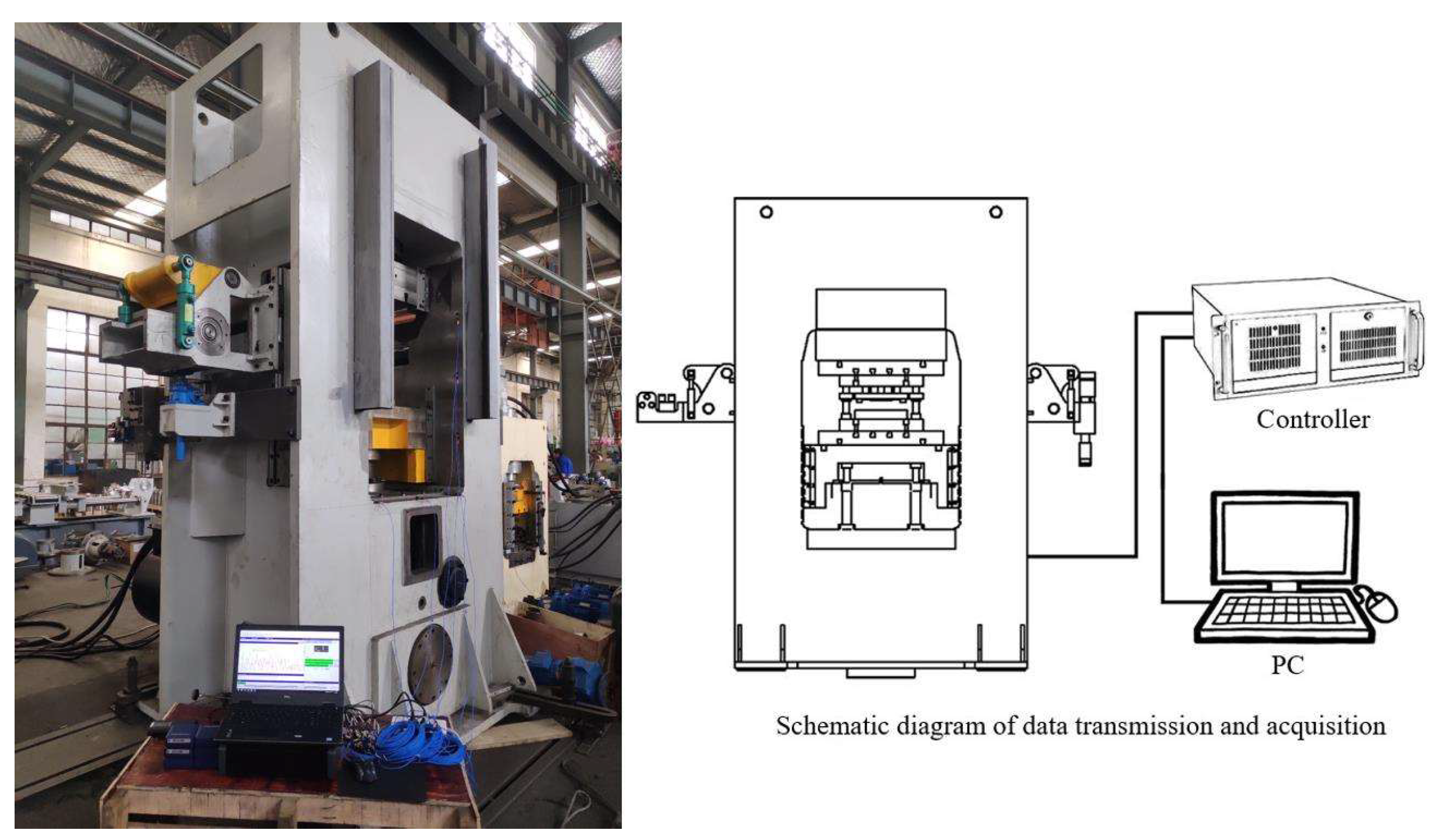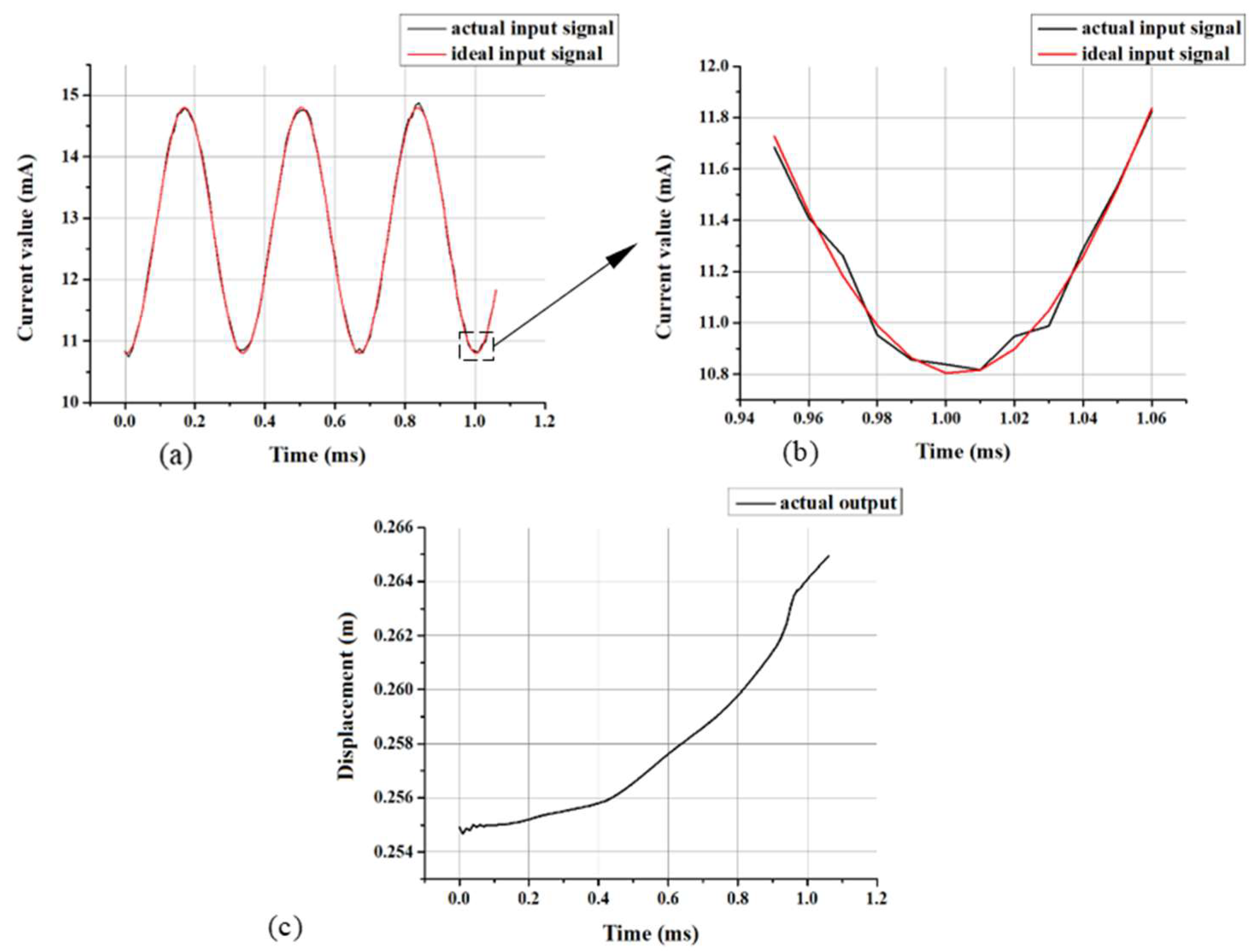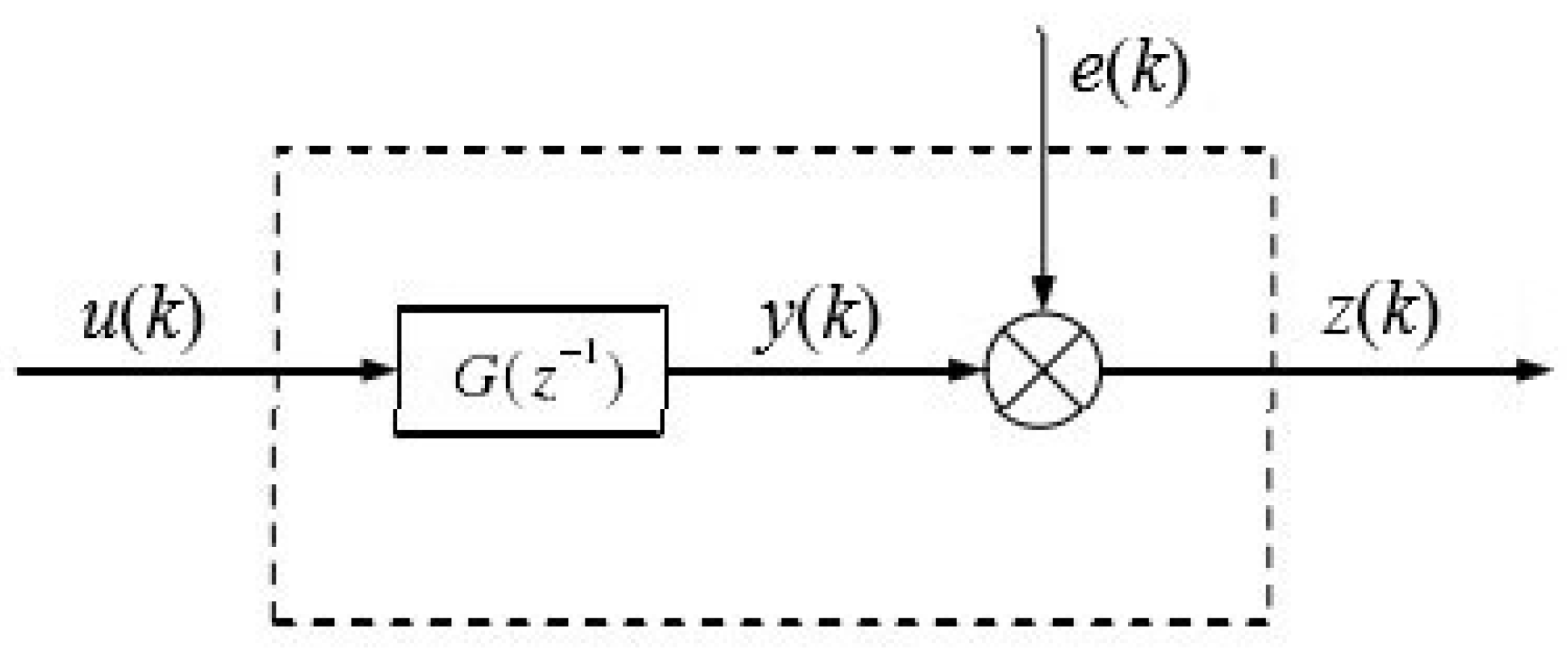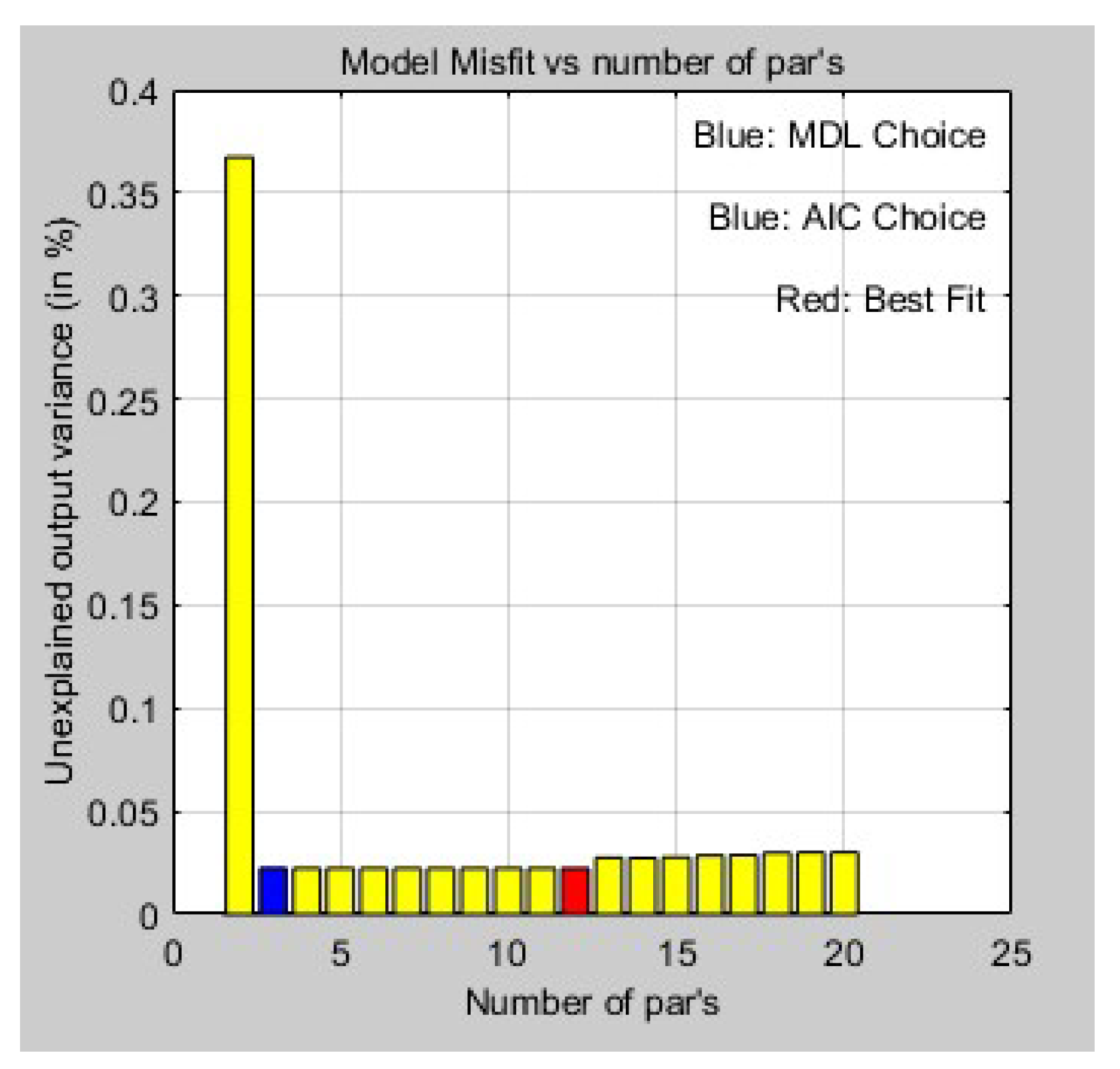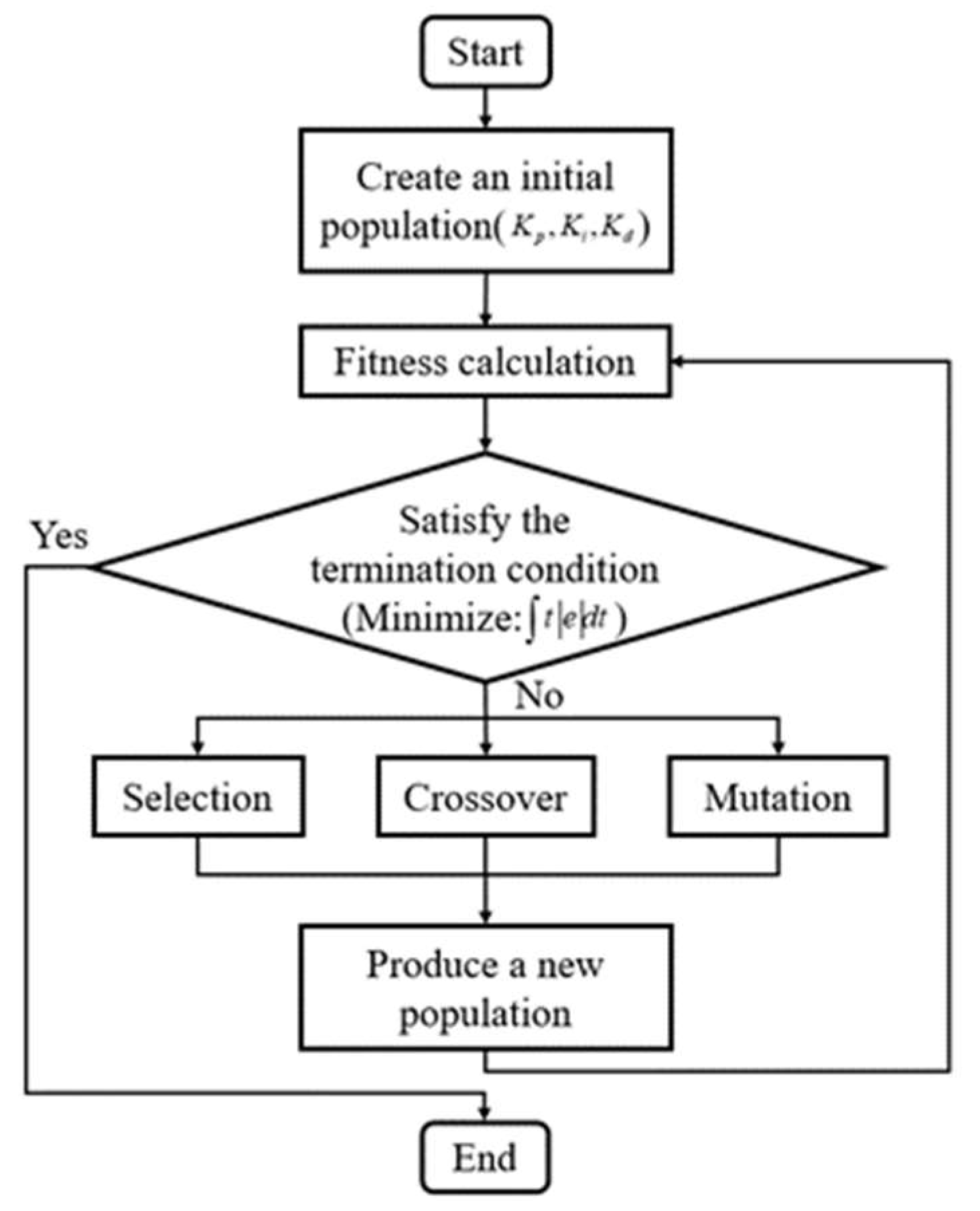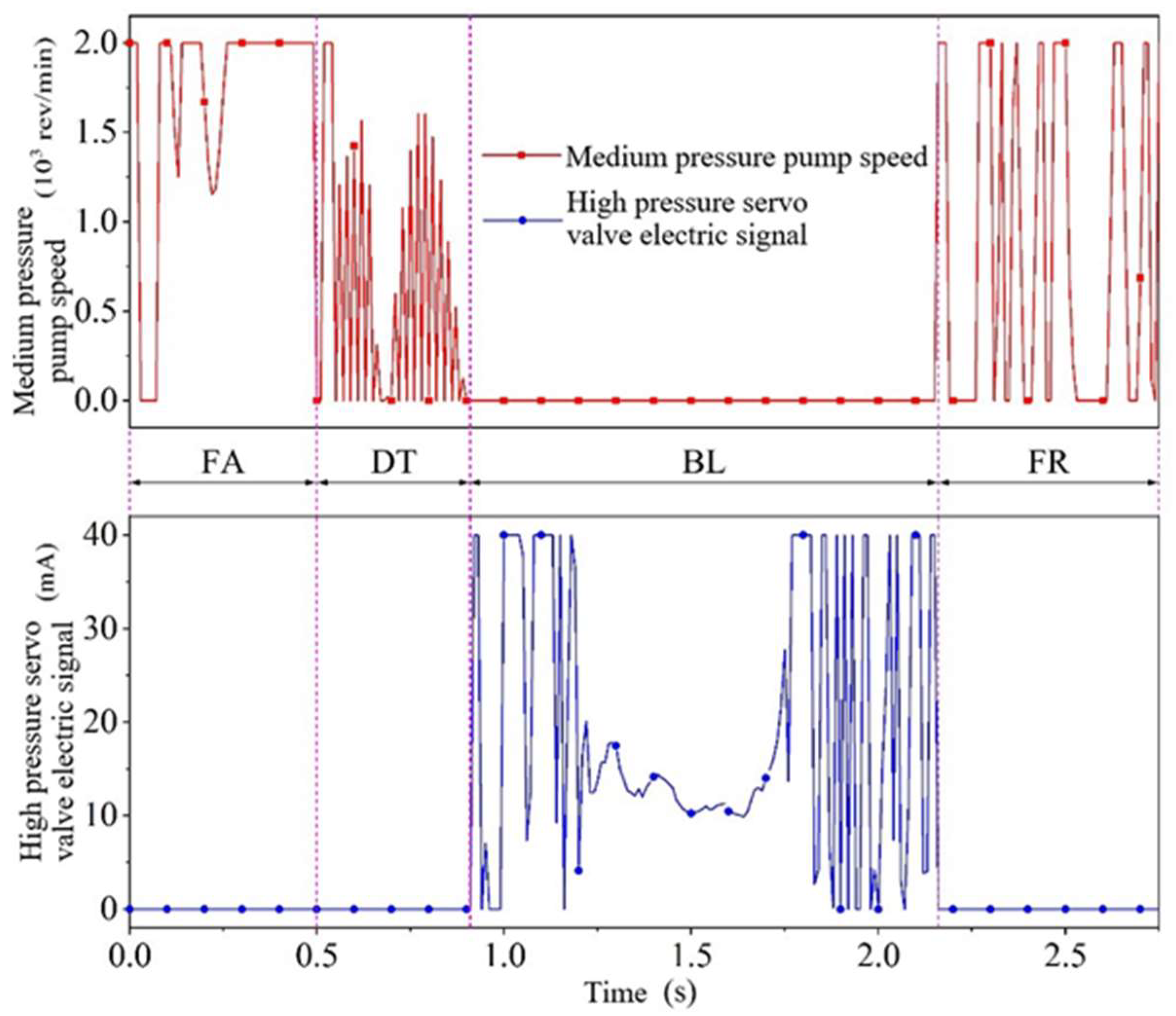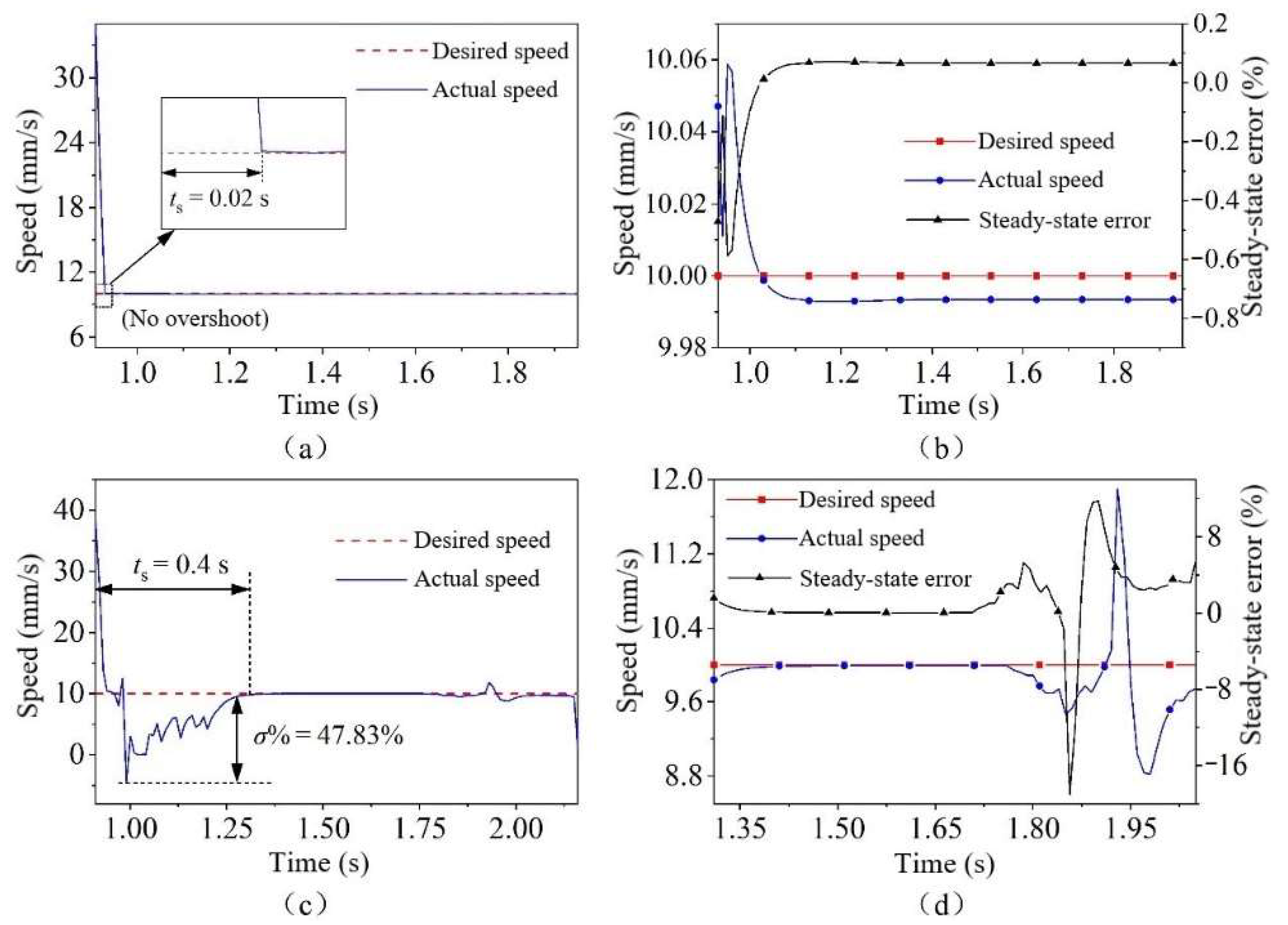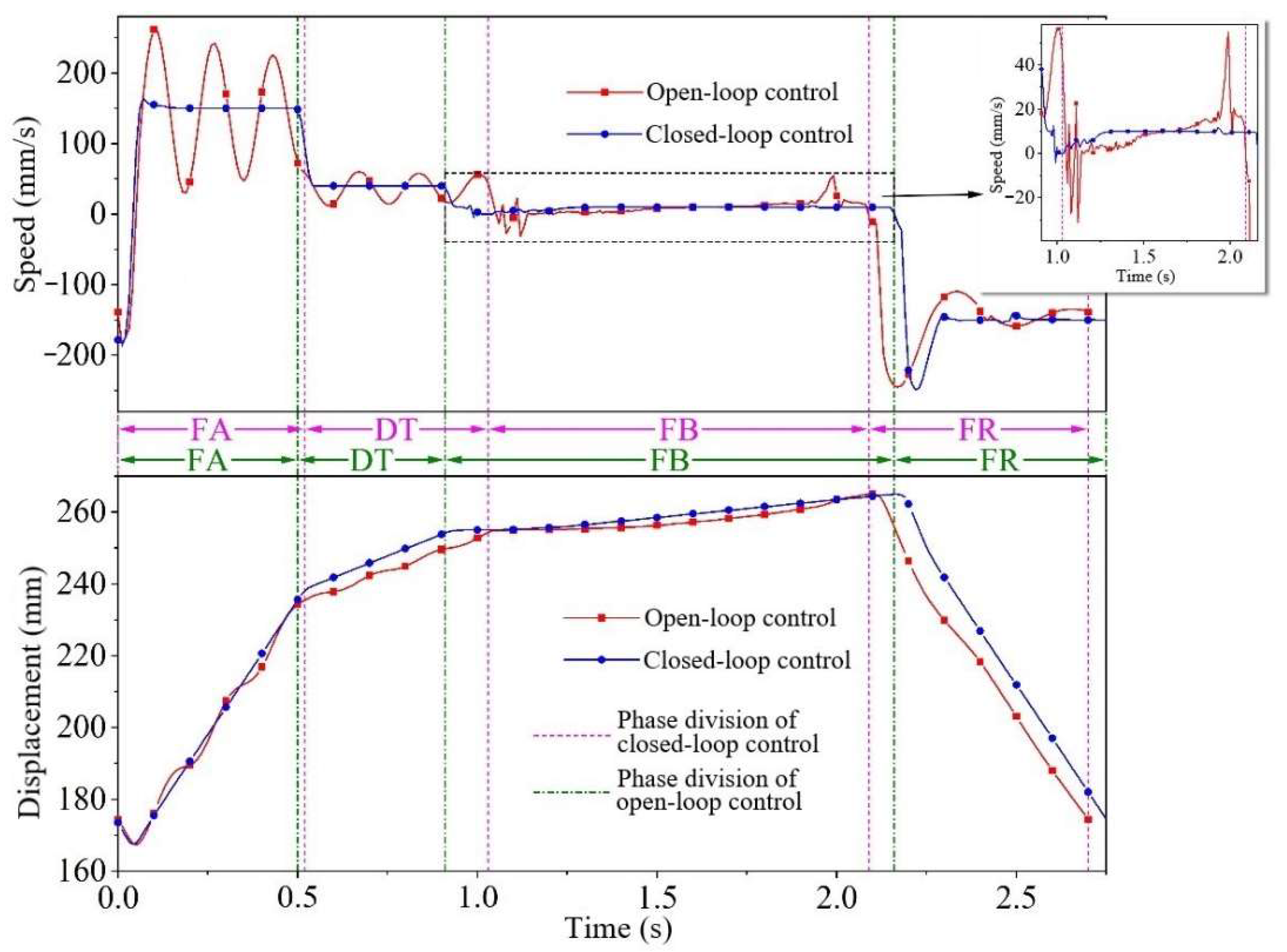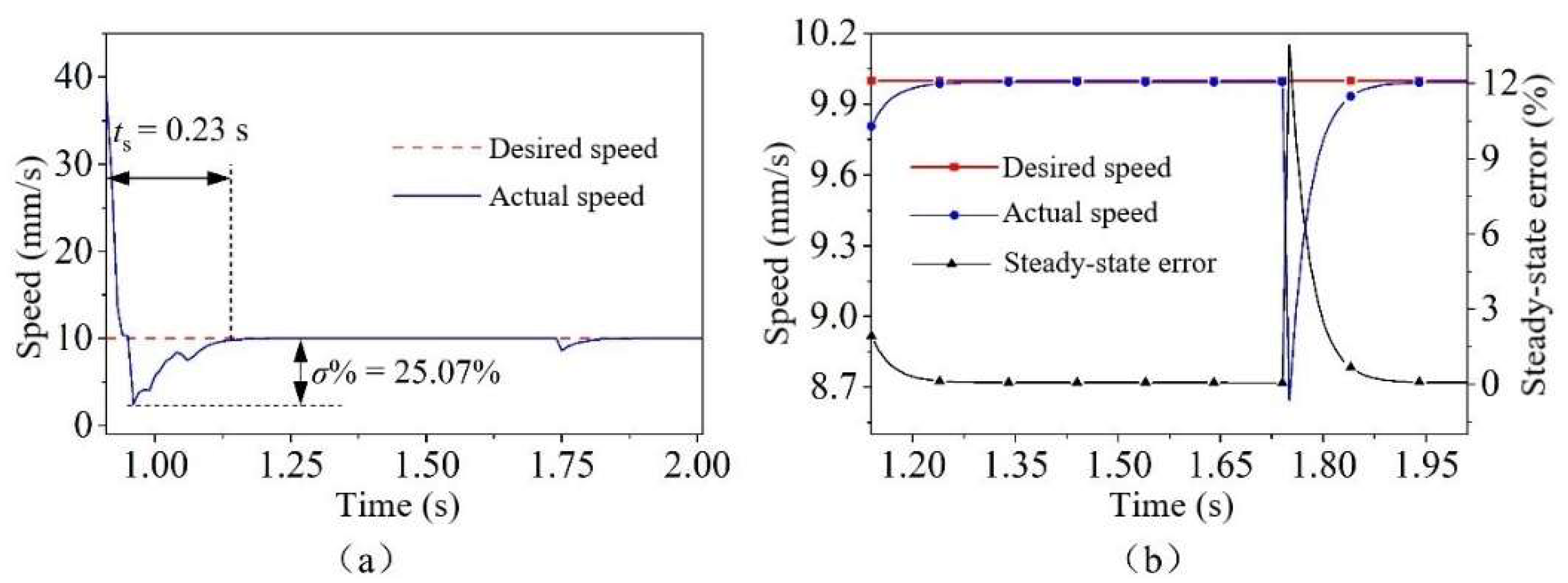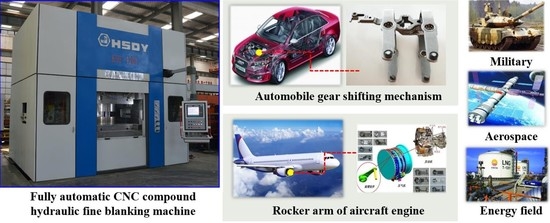1. Introduction
As an advanced plastic forming process, the fine-blanking (FB) process has been widely used in industry because of its high efficiency and high part quality [
1,
2]. Many sheet metal components (thickness from 2 mm to 20 mm) with a complex shape and high dimensional accuracy can be processed at one time through the FB process. The fine-blanking press (FBP) is a special press machine designed and manufactured to complete the FB process. It is a kind of high-end manufacturing equipment. In contrast to ordinary presses, the FBP needs to be able to provide blanking force, blank holder force and counter punch force at the same time [
3], and requires high stiffness and machining accuracy to meet the process requirements of FB [
4].
In the process of FB, the press needs to provide three main movements: the movement of the slide block, counter punch movement and blank holder movement. Among them, the main movement includes the following stages: the first is the fast approaching (FA) stage. Under the action of the oil cylinder, the slide block begins to move rapidly upward from the bottom dead center and quickly approaches the sheet metal. When the slide block moves close to the sheet metal, it enters the detection (DT) stage. The movement speed of the slide block slows down to detect whether there is waste residue on the die surface. If waste residue is present, the slide block returns to the bottom dead center and stops the machine; if not, the slide block continues to rise to enter the next stage. When the slide block moves to the blanking point, it enters the blanking (BL) stage. The slide block is driven by the fast subsystem oil cylinder, and is altered to be driven by the main blanking subsystem oil cylinder with high pressure and large flow rate in order to complete the blanking and forming process of parts at a low speed. After the BL stage, it enters the fast returning (FR) stage, and the fast subsystem cylinder drives the slider to return to the bottom dead center, quickly, from the upper dead center.
The hydraulic valve control system is widely used in traditional hydraulic FBPs due to its good control performance, fast response and simple operation [
5]. However, the large tonnage hydraulic FBP uses a fixed value high-pressure source to drive the load, resulting in a serious mismatch between the system output power and multiple load requirements, which cause the energy efficiency of the system to be very low. In order to solve the problem of the mismatch between the system output power and load power, our research group proposed a novel multi-stage pressure source drive system. For the 12,000 kN hydraulic FBP, a five-stage pressure source was used to replace the high-pressure source of the original equipment [
6]. By using the multi-stage pressure source system, the energy loss of the high-pressure circuit of the equipment in one cycle was reduced by 34.86%. For the fast circuit, the servo motor is used to drive the quantitative pump to realize the supply-demand matching of fast circuit pressure and flow, and the energy loss of the medium press circuit can be reduced by 50.32%.
Although the multi-stage pressure source system has a remarkable energy-saving effect, the resistance of the system is greatly reduced. During the actual using process, the motion speed fluctuation of the slide block became larger, and the motion accuracy decreased, which cannot meet the precision requirements of the FB process. Therefore, how to improve the motion accuracy of the slide block and reduce the speed fluctuation of slide block have become new problems.
Scholars have conducted extensive research on the speed control and motion accuracy of the hydraulic system. Hua et al. studied and analyzed the speed fluctuation and vibration of forging machine tools [
7]. Yang et al. designed a hydraulic speed control system of the crane anti-rolling device and studied the parameter matching of the main components, such as the hydraulic motor and hydraulic pump in the speed control system [
8]. Fang et al. analyzed the fluid transmission features of the hydraulic control system for the press machine and designed the hydraulic control system [
9]. The results show that the control system can effectively control the movement of the press. Wei et al. proposed an adaptive fuzzy sliding mode controller based on the Pi-sigma fuzzy neural network in combination with the Pade approximation, which is itself based on the common pressure rail system for hydraulic transformers [
10]; the result shows that it has strong robustness. Neha et al. presents an optimization technique method for the particle swarm optimization (PSO) algorithm for tuning the proportional-integral-derivative (PID) controller parameters for the electro-hydraulic servo system [
11]. Tanasak Samakwong et al. considered the optimization technique of Genetic Algorithm (GA) for tuning the PID controller parameter for the electro-hydraulic servo system [
12]; the results show that it has a good closed-loop performance. Liu et al. put forward a compound algorithm of proportional integral and speed feed forward displacement feedback [
13], the research finds that the proposed position scheme is effective in increasing the position precision. Bing et al. designed and analyzed the speed control system of the variable voltage variable frequency (VVVF) hydraulic elevator with the pressure accumulator [
14]. They carried out a comparison of the experimental research of energy-saving for the speed control of the VVVF hydraulic elevator, with and without the pressure accumulator. The experimental results show that the VVVF hydraulic elevator with the pressure accumulator has higher efficiency compared with the VVVF hydraulic elevator without the pressure accumulator. Jiang et al. took a servo motor quantitative pump hydraulic cylinder load as the main dynamic line [
15]. They studied the multiparameter characteristics of the system under the electromechanical-hydraulic coupling conditions and provided a theoretical basis and guidance for the high-performance control of the system. Zhang et al. proposed a flow-limited rate control scheme for the master-slave hydraulic manipulators [
16]. They developed the variable velocity mapping by adjusting the velocities to meet the pump and valves’ flow limits and designed an adaptive robust rate controller of hydraulic manipulators. In addition, they introduced an adaptive boundary estimator to estimate the hydraulic manipulator acceleration boundaries, and a variable structure controller is used to plan the velocities to meet the dynamic limits. The results showed that the control scheme reduced the velocity error and avoided the manipulator vibration; thus, the performance of the hydraulic manipulator was improved. In order to solve the problems of slow response, poor precision, and the weak anti-interference ability in the hydraulic servo position controls, Guo et al. designed a Kalman genetic optimization PID controller [
17]. The designed Kalman genetic optimization PID controller can be better applied to the position control of the hydraulic servo system. The Kalman filter is a good solution for the amplitude fluctuations caused by GA-optimized PID that reduces the influence of external disturbances on the hydraulic servo system. Although there has been a lot of research on the speed control of the hydraulic system, no research has been conducted on the combined control of the hydraulic valve and pump. Most of the existing research on speed control and speed fluctuation suppression of the hydraulic system focus on algorithms, and the applications are simple systems. However, for complex systems, such as complex the hydraulic system of FBP, due to the dynamic system being difficult to analyze, it has proven challenging to design effective controllers; therefore, there has been very little research on this topic. For complex systems, the system identification method is generally used to obtain their transfer functions. Researchers have conducted extensive research on the system identification of the hydraulic system. Maier et al. put forward nonlinear parameter identification for hydraulic servo-systems with switching properties [
18], which provided an optional idea for the system identification of the hydraulic system. Aiming at the modeling and control problems of the hydraulic turbine system, Jiang et al. proposed a hydraulic turbine system identification and predictive control based on the genetic algorithm-simulate anneal and back propagation neural network (GASA-BPNN) [
19]. Compared with the output response of the traditional control of the hydraulic turbine governing system, the neural network predictive controller used by Jiang has better effect and stronger robustness, solves the problem of poor generalization ability and identification accuracy of the turbine system under variable conditions, and achieves a better control effect. This method provides a good guiding effect for hydraulic system identification. Tian et al. presented an improved whale optimization algorithm (IWOA) and its application in the parameter identification of hydraulic turbine at no-load [
20]. Furthermore, in the identification process, the adaptive modification method is developed to solve the estimated parameter range uncertainty problem. The results show that IWOA has fast convergence and high precision. In order to improve the tracking accuracy of a hydraulic system, Feng et al. proposed an improved ant colony optimization algorithm (IACO) to optimize the values of the proportional-integral-derivative (PID) controller [
21]. In addition, Feng presents an experimental study on the parameters identification to deduce accurate numerical values of the hydraulic system, which also determines the relationship between the control signal and output displacement. All the above research provides a good solution for hydraulic system identification. At the same time, they provide a theoretical basis for the establishment of the hydraulic control system.
In this paper, our group studied the problems of large velocity fluctuation and low motion accuracy of the slide block of the multi-stage pressure source FBP. In
Section 2, the hydraulic system of FBP is introduced, and the mathematical model of the valve-controlled hydraulic cylinder is established. In
Section 3, through the method of system identification, the transfer function of the key stage is obtained; that is, the BL stage. In
Section 4, we proposed a multi-stage closed-loop control for the complex working process of the FBP using a genetic algorithm to find the best control parameters. For the BL stage with changing load, we established a fuzzy PID controller, so that it can meet various complex working requirements. The results show that the mathematical model obtained by this method has high accuracy, and the designed controller can effectively improve the motion accuracy of the slide block and reduce the speed fluctuation.

